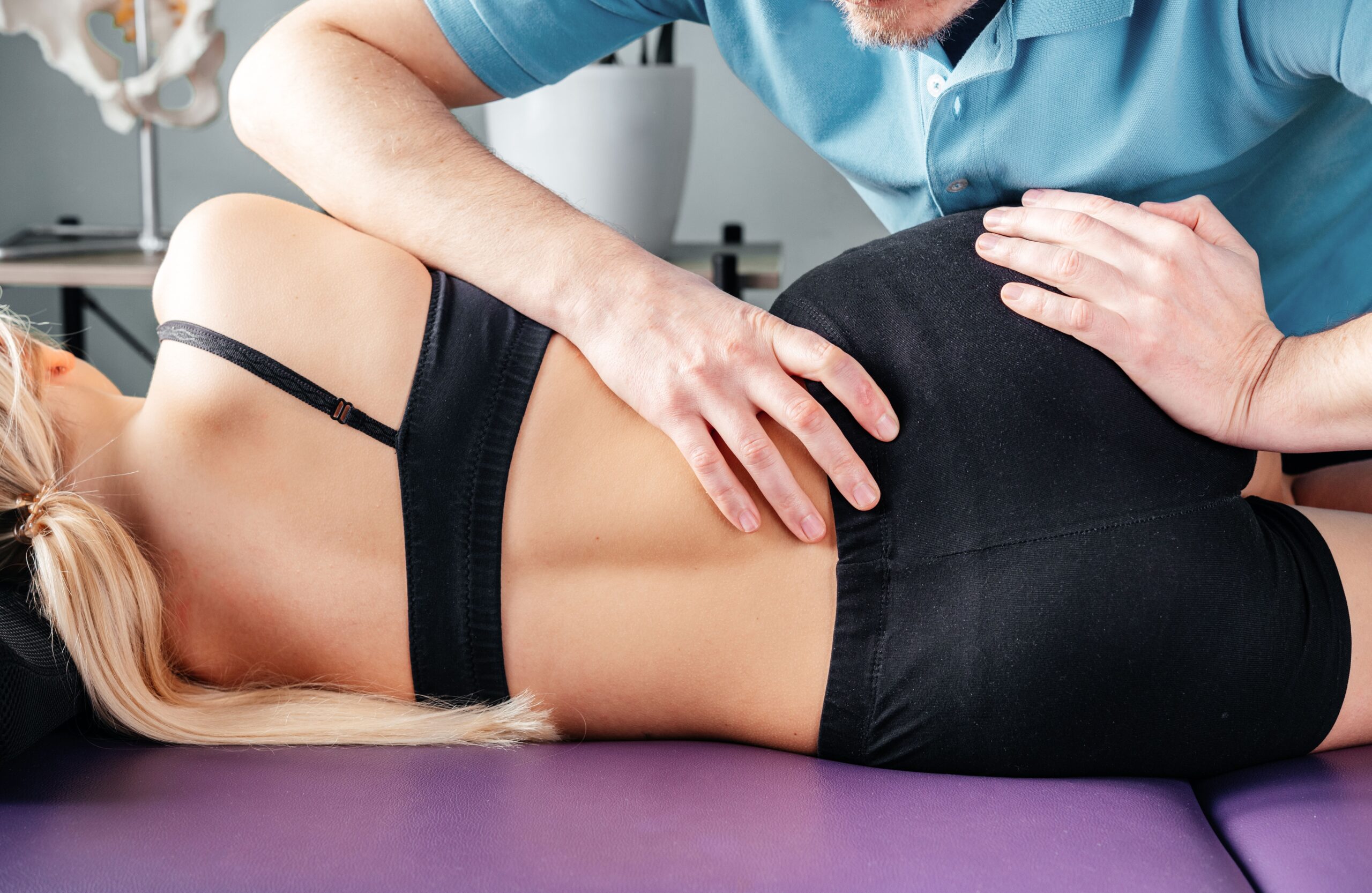SI joint problems can be elusive, disabling and are more common than you may realize.
To kick things off, let’s understand:
- What the medical term is,
- The definition, and
- What the symptoms are
“Sacroiliitis is painful inflammation in the joints where your spine connects to your pelvis (your sacroiliac joints – “SI joints”). It causes pain in your lower back, butt (buttock muscles) or legs,” the Cleveland Clinic states.
For those who have sought out an accurate diagnosis and proposed treatment plan, many are met with being misdiagnosed (stating it is the L4/L5 area instead of SI joints).
Molly Bachmann, DPT, who specializes in orthopedics and pelvic health, provides a comprehensive overview of SI joint problems.
What percentage of the population experiences SI joint issues?
“The most recent data suggests between 15%-30% of people with chronic or persistent low back pain is SI joint pain,” Bachmann begins.
No matter what phase of life you are in, SI joint, hip and back pain can be disabling.
Are there any “warning signs” that SI joint issues and the associated pain are imminent that individuals could be aware of?
“I’m not sure there are warning signs in particular. Often though, people who have low back pain may also develop SI pain,” she continues. Risk factors include sedentary behavior, having other or multiple diagnoses that are inflammatory, stages of life such as pregnancy, or acute trauma from a fall or repetitive injury.
In this case, what is Bachmann’s best advice for those with low back pain?
“It is important to develop a good treatment plan and stick with it. Every case is different!” Most people will benefit from some progress towards single leg strength exercises and mobility drills in the hip joints and low back.
What are the greatest causes of SI joint pain or discomfort?
- “Sedentary behavior,
- Working in a job that requires you to sit at a desk all day,
(As this creates a lot of stiffness in the SI and pelvic girdle region.)

- In pregnancy and the postpartum period, most of this actually comes from biomechanical changes that occur because of a rapidly expanding belly
These changes cause some muscle groups to be overused and others to be underused, which can cause pain in the SI region,” Bachmann informs.
Can a test be conducted on patients to determine it is their SI joints causing the trouble?
“In our Physical Therapy tool box, we have many tests and measures to determine if this is the source of someone’s pain. This is all done at the initial evaluation,” she stated.
In Bachmann’s notable experience, she identified the most challenging aspect of SI joint issues.
It would be “explaining to people that sometimes when pain shows up in a particular place, it doesn’t actually mean that the joint itself is responsible for the symptom,” she said.
Bottom line: “Pain is the symptom.”
“It doesn’t always tell us what the root cause of the problem is. With SI joint pain, we need to be super thorough in our evaluation beyond imaging to really understand what is causing the pain there,” she continues.
Always seek out a qualified expert in your area if you are experiencing pain.
For those at home who have not yet sought out treatment, I wanted to gather and share any simple at-home tips that could help alleviate SI joint pain.
Bachmann breaks it down based on chronic vs. acute SI joint pain and where the problem is on the spectrum of rehabilitation.
“For acute SI pain that is brand new, it may be best to sleep with a pillow between the knees and get up from a chair with 2 feet firmly planted on the ground.”
Whereas, “If someone is many weeks or months into their recovery, this is where things really start to look different. Some people do really well with static passive stretching of the piriformis and others need a more comprehensive approach that involves strengthening the lower abdomen or glute muscles and even the lower extremities depending on what their movement examination is telling us.”
The common theme?
“Unfortunately, and this is true for all types of musculoskeletal pain, there is not one easy “button” to press to make the pain better. Rehab science research is really showing that all programs need to be movement based and highly individualized in order to get the best, most sustainable results,” she finalizes.
Living in chronic pain takes a toll on individuals’ physical, emotional, and mental health. Isolating health challenges and navigating through those challenges, is best met with performing research, staying proactive, not giving up to find the right medical team and treatment options, and staying close to those who can support you and offer help through it all.
Molly Bachman, DPT, specializes in orthopedics and pelvic health. She is also certified as a birth doula. Her passion for improving individuals’ health has been proven beyond measure. She has studied public health in India, China, and South Africa, worked as a Peace Corps Volunteer in Sierra Leone during the Ebola crisis. Molly is passionate about educating the public on pelvic health and looks forward to expanding pelvic health access in the Midwest (of the United States).
Watch for more from Molly Bachmann, DPT, in the coming weeks.
Helpful expert interviews on pain can be accessed below:
“The trifecta of chronic pain, stress and anxiety is impairing health”;
“Stress, chronic pain, illness linked to decline in cognitive function”;
“Pain management doctor develops innovative methods to help patients”;
This website does not provide medical advice. No material on this site is intended to be a substitute for professional medical advice, diagnosis or treatment. It is for informational purposes only. Always seek the advice of a medical professional or other qualified health care provider on any health matter or question.
